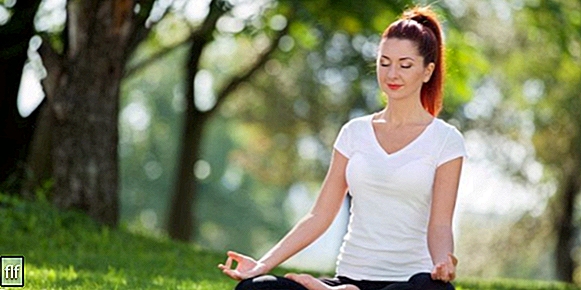- What is anxiety?
- Causes of anxiety
- symptoms of anxiety
- types of anxiety
- How to control anxiety?
- Generalized anxiety disorder
We explain what anxiety is and why it occurs. In addition, the types of anxiety, causes, symptoms and how to control it.
Anxiety is becoming a more frequent ailment in modern society.What is anxiety?
When we speak of anxiety we refer to an involuntary anticipation or disproportionate response of the organism against stimuli (internal or external) that are perceived as dangerous, stressful or challenging. Anxiety usually triggers tense bodily reactions, such as adrenaline release or muscle stiffness, as well as an unpleasant feeling of restlessness, urgency, or dispersion.
Anxiety can be part of a common adaptive response of the body to situations of risk or stress, so it is a response of the body itself to improve its response to the challenges ahead. Only when said response exceeds normal, that is, it becomes uncontrollable, chronic or exaggerated in the face of the dimensions of the stimulus (or even when it lacks an apparent stimulus), does it begin to be considered a disorder.
Even in those cases, the anxiety is usually a symptom of a deeper and hidden disease or illness, whether bodily or psychic, and only by treating the issue root can also deal with it.
In the societies In modern times, anxiety and its associated psychological disorders are becoming more and more frequent, associated with high levels of neuroticism. When it gets out of control, it can trigger behaviors that are socially and functionally harmful to individuals, as well as subjecting them to enormous emotional wear and tear.
Causes of anxiety
The causes of anxiety can be of two types:
- External. Events or situations of daily life that arouse in the individual the perception to be in danger or risk, such as a traffic accident, an important presentation, an entrance exam, a love date or any challenging situation.
- Internal. Emotional imbalances, psychic traumas, hormonal imbalances or psychological disorders can be causes of anxiety, triggering in situations in which there is no external stimulus that could trigger an adaptive response.
symptoms of anxiety
The usual symptoms of anxiety can be:
- Physicists Nervous sweating, dry mouth, dizziness, instability, tremors, muscle tension, headaches, tachycardia, precordial pain, lack of air, nausea, vomiting, diarrhea, constipation, frequent urination, or sexual dysfunction.
- psychological. Worry, apprehension, overwhelm, restlessness, feeling of death or impending insanity, fear, irritability, restlessness, difficulty concentrating and memory, insomnia, inhibitions, compulsions, obsessions either behaviors of evasion
types of anxiety
As stated before, it is common to distinguish between two forms of anxiety: adaptive and pathological.
- adaptive anxiety. All the Humans we experience it on some occasion: it is a response of the organism to a stressful situation, and that has as its objective keep us alert, prepared, ready for whatever happens. Normally it yields once the situation is overcome and does not prevent common operation.
- Pathological anxiety. The one that has no explanation, or that is disproportionate compared to its causative stimulus, or that is simply persistent in the weather, is considered a pathological anxiety, evidence of a psychological, emotional or hormonal disorder.
How to control anxiety?

Spiritual activities like yoga help combat anxiety.
To deal with anxiety there are simple homemade formulas, as well as drugs and anxiolytics. It all depends, of course, on the type of anxiety we are talking about.
For pathological anxiety, simply, the underlying problem must be addressed. The symptoms of anxiety can be treated separately, or together by taking anxiolytics, psychotropic drugs designed to chemically counteract it in the brain.
Instead, common anxiety or the tendency to be anxious can be combated by:
- Sedative infusions, such as linden tea, chamomile, etc.
- Physical exercise, to “burn off” anxiety and release endorphins.
- Meditation and spiritual activities, such as yoga, going to church, exercises breathing, etc.
- amuse yourself, by games, readings, movies or something that captures our attention.
- walk, maybe method simpler but effective.
Generalized anxiety disorder
Anxiety and anguish should not be confused with Generalized Anxiety Disorder (GAD), which is the name given to a series of psychic and emotional conditions closely linked to depressive or bipolar disorders. It is one of the most common mental illnesses, and is characterized by a chronic and unrealistic feeling of fear, worry and danger, which interferes with work and negatively impacts life. life of the subject.
Symptoms of GAD along with worry are usually: persistent insomnia, motor restlessness, difficulty concentrating or remembering, irritability, muscle tension and easy tiredness.
